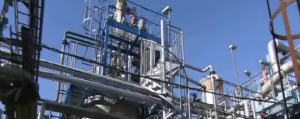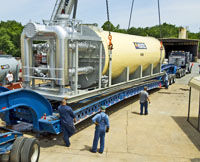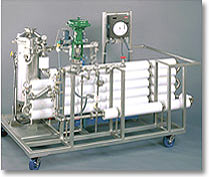Your plate heat exchanger was working just fine. You open it up to perform an annual cleaning, tighten it to the proper dimension, and upon start up, it begins to leak. What just happened?
The answer, as you might have guessed, could depend on a number of factors. However, if you notice that the leak either slows or stop altogether as the heat exchanger comes up to temperature, then the answer is very likely “cold leakage”. Before discussing cold leakage as the probabe cause, it”s important to ensure that the heat exchanger is indeed tightened to the factory recommended plate pack dimension. Also, perform a visual inspection of the gaskets along the plate edges. Look for any gaskets that may be bulging or have come out of the gasket groove during tightening. Be sure that the plate pack is tightened to the proper dimension on both sides and check top and bottom. Also, be sure that all of the plates have been hung properly.
The article entitled “Plate Heat Exchanger External Leakage” details some of the most common causes for plate heat exchanger leaks. Remember, plate heat exchangers are great pieces of equipment if they”re built from quality components and if they”re cared for properly.
The special case that we”re focusing on in this article is called “cold leakage”. Cold leakage often catches maintenance managers and planners off guard because there may not be obvious signs of a problem, until a unit is returned to service after being opened. Over time, elastomer gaskets slowly get oxidized by the air from the outside inward. As this process occurs, the gaskets slowly lose their elasticity and their ability to seal. This oxidation process happens faster at higher temperatures. When a unit is returned to service after being opened, you may notice a small leak that seems to self-seal or at least slow down as the heat exchanger warms up.
The heat causes the gaskets to swell just enough to seal or slow the leak. But rest assured, the gaskets will need replaced during the next maintenance cycle…and maybe sooner depending on how often you service your plate heat exchanger.
Figure 1 above shows a graphical depiction of how cold leakage can eventually occur. The good news is that cold leakage can afford the equipment owner the opportunity to learn how long their gaskets will last in a given application before catastrophic gasket failure occurs and down time may be required to repair the unit. Cold leakage is your heat exchanger”s way of telling you that it”s time to replace the gaskets soon. If you obey the warning signs, you can avoid unscheduled repairs in all of your plate heat exchangers.




